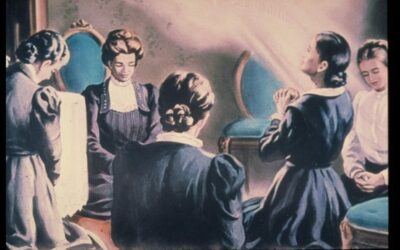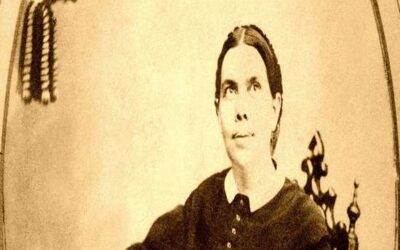Ellen G. White, a humble woman from Gorham, Maine, was a co-founder of the Seventh-day Adventist Church and a key leader in it from its very beginning. Following the Holy Spirit’s guidance at a young age, she dedicated herself to studying Scripture and became involved in the Advent Movement.
Throughout the Advent Movement’s early years, she showed exceptional wisdom and discernment when it came to applying biblical theology to modern life. Her insights from the Holy Spirit were numerous, and she was instrumental in the organization of the Advent Movement into the Seventh-day Adventist denomination.
And in everything she said, did, or supported, her primary message was this:
Jesus and the Bible are the foundation of love and truth.
But what did her role look like in the church? We’ll look closer at the following:
- How Ellen White helped develop Adventist doctrine
- How she helped establish the Adventist church
- How she guided the church
- How the church views her today
Let’s begin by going back to the early 1800s.
Ellen White’s role in the development of Adventist doctrine
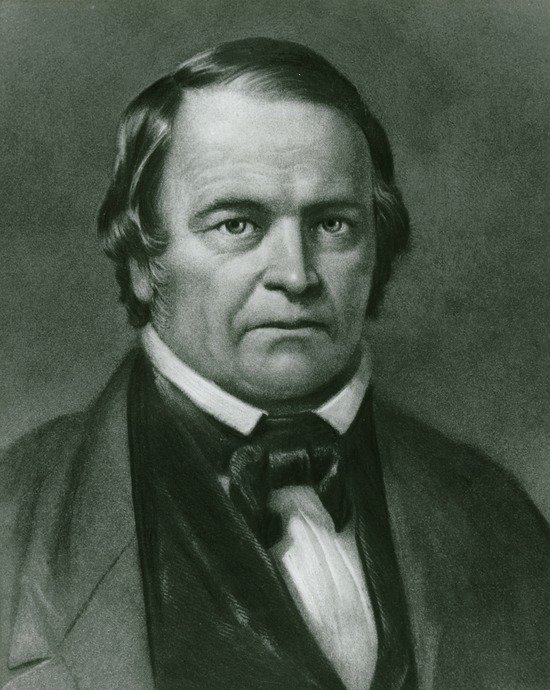
Courtesy of the Ellen G. White Estate, Inc.
Seventh-day Adventist doctrine was the result of intense Bible study. In the mid-1800s, committed believers of the Advent Movement held conferences where they spent days (and nights!) poring over Scripture—both the Old and New Testament.
Ellen White’s role in these Bible studies was very important. She received insight from God that helped confirm the biblical teachings those believers were studying, which laid the foundation for many of the major Adventist doctrines.
And these moments of enlightenment always pointed back to the Bible and amplified its truths.
So how did the Advent believers get to this point?
It started with a message:
Jesus is coming back! And soon!
This message spread throughout New England and beyond, spurring excitement about Jesus’ soon return.
Some years before the Advent Movement, William Miller, a middle-aged farmer, decided to search the Bible for answers to some deep questions he had after his experience at war. As he did, he encountered a cryptic prophecy in Daniel 8:14. It predicted the timing for the “cleansing of the sanctuary.”
That’s when his study took a long detour.
After months of careful study, he concluded that “cleansing of the sanctuary” was God’s cleansing of the earth at the end of the world. Jesus was returning soon!
When?
In 25 years! October 22, 1844, would be the end of the world.
Where was Ellen White in all this?
She was only 12 when she first heard William Miller preach in her hometown of Portland, Maine. His messages convinced her that Jesus was indeed returning soon.
She joined the movement, known as the Millerite Movement and anticipated the event. Though it meant that she and her family, the Harmon family, were no longer allowed to be part of the Methodist Church, they valued the truth of the Bible and didn’t feel they could let go of their hope in the Second Coming.
But October 22, 1844, slipped away, and this event became known as the Great Disappointment. With the Great Disappointment, her heart sank.
Little did she realize what God had in store next.
A couple months later, she gathered together with a group of women at a friend’s home to pray. As she prayed, God gave her a vision of the Advent people traveling on a narrow path toward heaven. They had their eyes fixed on Jesus, and He was guiding them.
Ellen White also received a second vision soon after. This time, God called her to be His messenger and showed her the challenges she would face. The 17-year-old agonized over this call, pleading with God to send someone else. But she couldn’t shake His instruction from her mind:
“Make known to others what I have revealed to you.”1
These two visions were the first of many hundreds of visions and prophetic dreams she received from the Holy Spirit in her lifetime.
While the idea of “visions” or even the spiritual gift of prophecy can seem strange to us in modern times, it’s important to note that these visions were always in line with biblical truth. They were meant to call people’s hearts back to Scripture, just like many of the prophets in the Bible.
Nothing was added or subtracted from what the Bible taught. And her visions typically followed earnest sessions of Bible study and prayer.
We’ll look below at how the teachings of the sanctuary and the Sabbath were developed with assistance from her God-given insight. We’ll also see how the Bible conferences of 1848 to 1850 followed the same pattern in developing the doctrine of the Adventist Church. Ellen White’s function was to confirm these teachings as biblical and provided an important framework through which to view them.
Jesus’ ministry in the heavenly sanctuary
Over in New York state, other Millerites were still reeling from the Great Disappointment.
What next? Why hadn’t Jesus come? People prayed for answers.
Among them was Hiram Edson.
After the disappointment of 1844, Hiram and other believers began studying the Bible and found that perhaps, something did happen in 1844. Specifically, Edson received a strong impression that Jesus had moved from the Holy Place to the Most Holy Place of the sanctuary in heaven.
What did it mean?
He and other believers began to re-study what the Bible says about the sanctuary.
Eventually, they concluded that 1844 was the correct date!
The event, however, was not.
William Miller had thought that Daniel 8:14 referred to Jesus coming back to “cleanse” the earth. But Jesus had instead begun an important work in the sanctuary in heaven.
Ellen White had a vision in which she saw Christ moving from the Holy Place to the Most Holy Place of the sanctuary in heaven. Her vision confirmed what Edson and his associates had been studying in the Bible. This framework of Bible prophecy would be very important in developing Adventist doctrine.
The Sabbath
The seventh-day Sabbath was one of the biblical truths the Adventist believers embraced early on. Ellen White’s visions helped verify that they were on the right path.
One interesting thing to note, however. Even as she was among the leaders of Adventism, she at first reacted negatively to the emphasis on the seventh-day Sabbath.
Ironic, isn’t it?
When she first heard about the Sabbath from another believer named Joseph Bates, she was skeptical. But as other believers began keeping this day holy, she and her husband, James White, decided to study it out.2
And, you guessed it—
The evidence they found in the Bible led them to keep the seventh-day Sabbath too.
About seven months after this decision, she received another vision. In it, she saw the Ten Commandments in the sanctuary in heaven. One commandment—the one about the Sabbath—glistened with a halo of light around it.
Noticing a pattern?
God expected the believers to dig into the Bible. But if they struggled to put some pieces together or needed encouragement, God’s visions to Ellen White would confirm the truth.
With the challenges ahead, these confirmations would become even more important.
The conferences of 1848 to 1850
Conferences of Second-Advent believers from 1848 to 1850 were pivotal in defining their fundamental doctrines. These believers gathered to pray, fast, and study the Bible.
But as is the case when human beings come together, differences of opinion inevitably surface. Sometimes entire nights would pass as they wrestled to understand specific passages. It can be so tough to recognize and set aside preconceived ideas.
Here is where the visions became particularly valuable.
When the believers hit a roadblock, Ellen White would receive a vision that clarified the difficult passages or topics. In her words, “light was given that helped us to understand the Scriptures.”3
Something strange happened to her, though. She describes it this way:
“During this whole time I could not understand the reasoning of the brethren. My mind was locked, as it were, and I could not comprehend the meaning of the Scriptures we were studying…. I was in this condition of mind until all the principal points of our faith were made clear to our minds, in harmony with the Word of God.”4
At another conference, a man had been presenting ideas that contradicted the Bible. Suddenly, she went into a vision. She grabbed a large family Bible in one hand and began pointing at various texts. While looking forward at everyone, she recited the texts she pointed at—all of which helped explain the error.
Those around her peered at the texts and found that she had indeed said them word for word.
From 1845 to 1848, Ellen White had at least five visions in which she held up a Bible and recited texts in this way.
Why is this significant?
It highlights the focus of her ministry and the position she had. She was all about pointing people to the Bible.
The Great Controversy framework
And she did more than simply point to the Bible.
She also helped develop a framework in which to study the Bible and understand its teachings and prophecies.
Christ was central to this framework.
She wrote, “The truth for this time is broad in its outlines, far reaching, embracing many doctrines; but these doctrines are not detached items, which mean little; they are united by golden threads, forming a complete whole, with Christ as the living center.”5
A major contribution to this framework was her vision of the Great Controversy theme in 1858. During this vision, Ellen White saw a sweeping picture of God’s ultimate salvation plan. It also showed her the conflict between good and evil taking place in our world.
This framework shaped every aspect of her ministry. And it helped to unify all the biblical principles of Seventh-day Adventism.6
Ellen White’s role in the establishment of the church
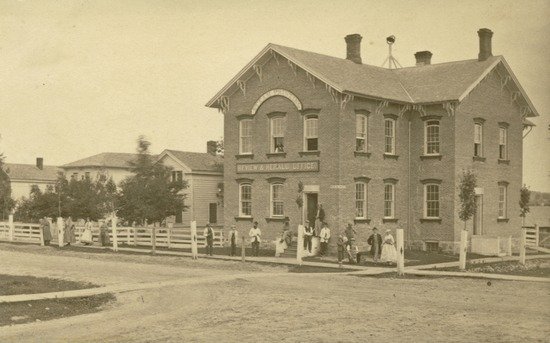
Courtesy of the Ellen G. White Estate, Inc.
As she studied the Bible and received visions from God, she wrote down what she saw. James began to publish them in pamphlets. The couple also traveled throughout the northeastern United States so she could share her testimony.
Her role reflected the role of many biblical prophets: traveling, preaching, writing, teaching, and providing counsel and correction.7
During this time, her visions “were quite frequent, some giving them directions as to the couple’s labors, and others opening up important lines of instruction for the emerging church.”8 Still others would help establish the official Seventh-day Adventist Church as a Christian Protestant denomination.
One vision in 1848 instructed James White to begin publishing a paper. The Present Truth became the first Seventh-day Adventist publication. “From this small beginning it was shown to me to be like streams of light that went clear around the world,” Ellen White described.
And she was right.
Publishing became a powerful ministry of the church with two major publishing houses: the Review and Herald Publishing Association and Pacific Press Publishing Association.
But before all that happened, the church needed a name.
In May of 1860, believers decided on a name for the church: Seventh-day Adventist. Then, the following year, they incorporated the church’s first printing company.
The Whites continued to urge full organization of the church. Up to this point, the Advent believers were small, scattered congregations. Many of the ministers worked part time as farmers to support their ministry. At the same time, problems arose as false teachers tried to confuse the believers or assert their own agendas.
Something had to be done.
Organizing the church would unify its members, provide a way to license and pay ministers, and prevent the spread of false teachings.
Enter the General Conference of Seventh-day Adventists, which was organized in 1863. Much was ahead for this new organization.
Not long before, Ellen White had also counseled the church to have a financial plan to support its work. The plan, known as systematic benevolence, proved a success, and church members continue to follow its principles.
By God’s guidance, she would start and support many aspects of the church that still exist today.
Here are the most important:
- Health and medical work
- Education
- Worldwide missions
Health and medical work
In 1863, she had a major vision that covered the topic of health and lifestyle principles. These principles, if followed by God’s people, would promote better physical, mental, and spiritual health.
But it was about more than just personal health.
Jesus cared for people’s physical and spiritual needs wherever He went. The church could do the same through medical missionary work.
God showed Ellen White that the church was to start a health center that “should provide a home for the afflicted and those who wish to learn how to take care of their bodies that they may prevent sickness.”9 The Western Health Reform Institute, later Battle Creek Sanitarium, opened in Battle Creek, Michigan, in 1866.
Today, the Church operates over 160 hospitals and 400 clinics worldwide, as well as numerous lifestyle centers and health food companies. One of the most well-known Adventist hospitals that she helped start is Loma Linda University Hospital in California.
Education
Education was the subject of Ellen White’s next major vision. She urged church leaders to establish schools that would offer a well-rounded education, while being able to support themselves through useful industries. Yes, students would learn academics. But they would also work with their hands, learn about health, and become equipped to serve God.
Battle Creek College was the first of these schools. She also helped start both Avondale College (Australia) and Madison College (Tennessee). Many more would follow, and she would serve as a source of counsel and guidance for their leaders.
Worldwide missions
Ellen White advocated for worldwide mission work as she encouraged the church to proclaim biblical truth before Jesus’ return. In one of her visions, she saw that the Christ-centered messages of truth would circle the globe.
One means of evangelism was through the spread of books and papers. But there was more.
People could do what ink and paper could not!
In 1874, the Adventist Church sent its first official missionary, J. N. Andrews, to Europe. Ellen White herself spent a couple years serving in Europe (1885–1887) and guiding the church in Australia for nine years (1891–1900).
Because of God’s leading through her, the church was on its way to becoming a worldwide movement. It has since sent missionaries to every continent and countless countries.
Ellen White’s role in guiding the Adventist Church’s growth and progress
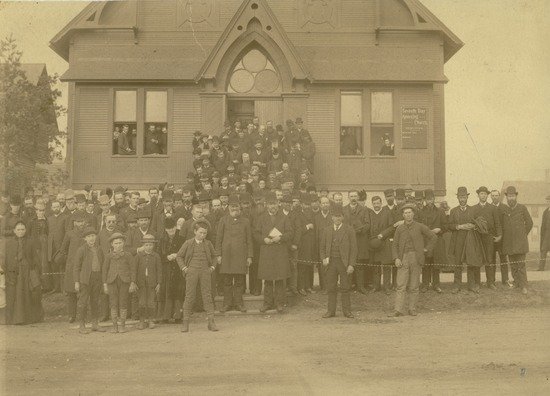
Courtesy of the Ellen G. White Estate, Inc.
The fledgling Advent Movement was burgeoning into a worldwide organization. This transition was not without hiccups—as we would expect of any human organization.
The church faced many challenges. How should it handle disagreements among its leadership? Where should it establish its institutions? How should it run them? Was the General Conference, the administrative head of the church, becoming too powerful? It needed counsel in these and other areas.
There was something more troubling than administrative challenges, though. And God’s guidance through Ellen White would be needed more than ever.
Throughout her ministry, the God-given burden on her heart was Jesus and His truth. This burden came out especially strong in the 1888 General Conference Session.
Up to this point, the church had zeroed in on the importance of God’s law. The Sabbath truth was new, and naturally, they focused on it.
But it had turned into legalism. Many had not experienced Christ’s transforming power in their hearts.
She began to recognize that many Adventists had lost sight of Jesus and His love because they had overemphasized the law—and wanted everyone to follow it to the letter.
God had a plan. He sent two young men, E. J. Waggoner and A. T. Jones, to present pivotal messages at the 1888 session. Their talks were fresh reminders to live by faith in Christ’s righteousness instead of trusting human effort.
What was her response?
She endorsed these messages through her writing and preaching. “The Lord in His great mercy sent a most precious message to His people through Elders Waggoner and Jones,” she said.10
On the other hand, some worried that emphasizing Christ too much would lead the people to set aside the law. Ellen White helped to balance the conflicting views:
The law led people to see their sin and turn to Christ for help. As they looked to Christ by faith and received His forgiveness, they would receive power from Him to obey. And they would already want to obey as a result of love for their Savior.
Throughout the rest of Ellen White’s lifetime, God continued to use her to keep the church on track. This included helping to reorganize its structure in 1901.
She became a prolific author, writing nearly 50 books, 5,000 articles, and 200 tracts and pamphlets in her lifetime.11 Her first book was called A Sketch of the Christian Experience and Views of Ellen G. White, which contained a description of how God led her in the early years of her Christian experience and calling to be His messenger.
In addition, she wrote thousands of pages of manuscripts and letters to church groups, members, and leaders. Some letters contained encouragement; others were notes of warning. They covered principles related to the home, the church, Christian conduct, and mission work. At times, she would receive specific instructions just in time for certain meetings or conferences. (Many of these messages have been compiled in her nine-volume series called Testimonies for the Church.)
What overarching themes characterized these messages?
Adventist theologian George Knight identifies seven12:
- The love of God
- Jesus, the cross, and salvation
- The Great Controversy
- The centrality of the Bible
- The Second Coming
- The mission of the Adventist Church
- Practical Christianity and character development
God used the writings of Ellen White to keep the Adventist Church focused on Jesus and His Word.
How about today? Has Adventism upheld this philosophy?
How the church regards Ellen White today

Photo by Burst
Jesus and the Bible—not Ellen White—continue to form the foundation for the Adventist Church.
Within this context, the church sees her visions and writings as the spiritual gift of prophecy, as described in 1 Corinthians 12 and 14. Its official beliefs state:
“The Scriptures testify that one of the gifts of the Holy Spirit is prophecy. This gift is an identifying mark of the remnant church and we believe it was manifested in the ministry of Ellen G. White. Her writings speak with prophetic authority and provide comfort, guidance, instruction, and correction to the church. They also make clear that the Bible is the standard by which all teaching and experience must be tested.”13
The Adventist Church owes much to the earnest Bible studies of the early Advent Movement. Ellen White’s visions during that time clarified and confirmed those studies.
Today, those teachings are the basis for many of the doctrines of the Adventist Church:
- The Second Coming
- The Sabbath
- Jesus’ ministry in the heavenly sanctuary
- The three angels’ messages of Revelation 14
- The state of the dead
- The spirit of prophecy
- Righteousness by faith in Jesus
Her writings (about 100,000 pages’ worth), compiled by the Ellen G. White Estate, also continue to bless and benefit the church. The church encourages members to read her books as a supplement to their own personal Bible studies.
In 2015, the Adventist Church released this statement:
“We commit ourselves to study the writings of Ellen G. White prayerfully and with hearts willing to follow the counsels and instructions we find there…. We encourage the continued development of both worldwide and local strategies to foster the circulation of her writings inside and outside the church.”14
Steps to Christ, her book on Christian living and deepening a relationship with God, has circulated in the tens of millions. It was also translated into over 160 languages!
Her monumental Conflict of the Ages series traces God’s salvation plan throughout history. One book in the series is The Desire of Ages, a beautiful commentary on the life of Christ. Another is The Great Controversy, which connects Bible prophecy with post-biblical history and describes the themes of the battle taking place between Christ and Satan. The Ministry of Healing highlights how Jesus healed people physically, spiritually, and mentally and how we can practice those principles today.
Used in personal study, small groups, classroom settings, and more, Ellen White’s writings still enhance the spiritual lives of its readers. A survey found that Adventists who read her writings experience a closer relationship with Jesus and spend more time in their Bibles.15
Ellen White’s story and influence is remarkable and appreciated. But her experience is not unique
Since the beginning of humanity, God has used individual people to spread the gospel and minister to the world. And while there are many Bible stories of Him working through kings or rulers or priests, there are also countless times God chose someone from amid a crowd of ordinary people to accomplish extraordinary things for Him.
Throughout the Adventist Church’s rich and eventful history, we can see how Ellen White was one of those ordinary people God selected for a special role in ministry. All the way to her death in 1915, she was a “willing vessel,” one in whom His power could shine through and touch the hearts of many.
The Adventist Church today celebrates the wonderful things God accomplished through her willingness to be a messenger. Her name has left a legacy of gratitude and of encouragement that any one at any time in any place could be selected by the Holy Spirit to receive the spiritual gift of prophecy. Ellen White’s story can give us hope that God’s Spirit remains active and involved in our earthly lives.
- White, Ellen, Early Writings (Washington, D.C.: Review and Herald, 1882), p. 20. [↵]
- White, A. L., Ellen G. White: The Early Years: 1827–1862, vol. 1, (Review and Herald, Hagerstown, MD, 1985), p. 116. [↵]
- White, Selected Messages, book 1 (Washington, D.C., Review and Herald, 1958), p. 206. [↵]
- Ibid., p. 207 [↵]
- White, Selected Messages, book 2 (Washington D.C., Review and Herald, 1958), p. 87. [↵]
- Douglass, Herbert, Messenger of the Lord (Nampa, Idaho, Pacific Press, 1998), p. 256. [↵]
- For example, Nathan rebuked David (2 Samuel 12:1–15); Elisha traveled and taught the sons of the prophets (2 Kings 4:38); Micaiah counseled King Ahab of Israel (1 Kings 22:13–28); and John wrote down the prophecies God gave him (Revelation 1:11). [↵]
- White, A. L., Ellen G. White: The Early Years: 1827–1862, vol. 1, p. 158. [↵]
- White, Testimonies for the Church, vol. 1 (Mountainview, CA: Pacific Press, 1948), p. 489. [↵]
- White, Testimonies to Ministers and Gospel Workers (Mountain View, CA, Pacific Press, 1923), p. 91. [↵]
- “How Many Books and Articles Did Ellen White Write?” Ellen G. White Estate. [↵]
- Knight, George, Meeting Ellen White: A Fresh Look at Her Life, Writings, and Major Themes, (Hagerstown, MD, Review and Herald, 1996), pp. 109–127. [↵]
- “What Adventists Believe about the Prophetic Gift,” [↵]
- “Statement of Confidence in the Writings of Ellen G White,” [↵]
- Dudley, Rogers, and Cummings, Des, Jr., “Who Reads Ellen White?” Ministry, Oct. 1982, pp. 10–11. [↵]
More Answers
8 Pieces of Advice from Ellen White’s Counsel for Families
8 Pieces of Advice from Ellen White’s Counsel for FamiliesFamily—it can be the source of the most wonderful and frustrating parts of life. And it’s in the family that individuals develop their identities and learn the behaviors that either propel them forward or...
Ellen White’s Visions and Prophecies
The New Testament upholds prophecy as a spiritual gift that will continue to the end of time (Ephesians 4:11–14).
Ellen G. White’s Counsel on College Education
Ellen G. (Harmon) White, a significant co-founder of Adventism, is often known for her practical and spiritual guidance for proper childhood education. But she was also significantly involved in the development of Seventh-day Adventist higher education.
Ellen G. White or the Bible—Which is More Important to Adventists?
The Bible—without a shadow of a doubt—is the most important book. It’s the standard we use to test all other writings, including those of Ellen White.
Do Adventists Worship Ellen White?
Ellen White was a co-founder and leader in the Seventh-day Adventist Church from its beginning. Adventists believe that she had the prophetic gift (Ephesians 4:14; 1 Corinthians 12:28) and passes the biblical tests of a prophet.
Ellen White and the Sabbath
The Sabbath is an important topic in the Seventh-day Adventist Church. It shouldn’t surprise you, then, that Ellen G. White, a co-founder of the church, studied the Bible’s teachings on the Sabbath and wrote large amounts about it.
Are Any of Ellen G. White’s Prophecies Yet to Come True?
Yes. Some prophesied events have yet to happen. Ellen White, a co-founder of the Seventh-day Adventist Church, demonstrated many times over that she had the spiritual gift of prophecy (1 Corinthians 12, 14). Some of her predictions’ timelines have already passed, and those prophecies have been fulfilled.
What Ellen G. White Said About Using the Bible in Education
Ellen White, one of the founders of the Seventh-day Adventist Church, believed that education was not complete unless it was founded upon the principles of the Bible.
Ellen G. White’s Counsel on Christian Education
Ellen White, a co-founder of the Seventh-day Adventist Church, saw that the educational system during her time was lacking and looked for ways to improve it—not only in the United States but throughout the world. And as part of her life of ministry, she sought out practical ways to be better stewards of our minds, bodies, and the lives we’re given.
What Was Ellen G. White’s Counsel on Music?
At its core, music is a collection of tones, sounds, and rhythms that creates a melody. It’s also much more than that.
How Ellen White’s Teachings Can Improve Your Health
Healthcare in the nineteenth century was said to leave “more disease than it took away” with its use of bloodletting and “medicines” like mercury and arsenic. As people questioned these methods, new approaches popped up. But which ones were reliable?
Ellen White’s Spiritual Counsel on Marriage
As one of the founders of the Seventh-day Adventist Church, Ellen G. White was held in high regard. She was a prolific author and was heavily engaged in the mission of the denomination, prayerfully pursuing the guidance of the Holy Spirit.
Were All Ellen White’s Books Inspired?
As the most translated female author in the world, Ellen White wrote numerous books, articles, pamphlets, and more. These writings focused on developing Christian character, emphasizing Bible truth, practical tips for living well and staying healthy, and discussing effective methods of delivering the gospel message to the world.
What is the Spirit of Prophecy?
The Spirit of Prophecy, one of the spiritual gifts of the Holy Spirit, is described as “the testimony of Jesus” (Revelation 19:10) and, according to Belief 18 of the 28 Adventist Fundamental Beliefs about Scripture, it will be one of the distinctive characteristics of the remnant of devout believers in the end times (1 Corinthians 14:1-5; Revelation 19:10; Revelation 12:17).
How Ellen White Influenced the Adventist Health Message
Seventh-day Adventists are known for their emphasis on healthy living. And Ellen G. White was a significant influence in the development of this priority and practice among Adventists.
What Did Ellen White Say About End-Time Prophecy?
We can read in Scripture about the series of events and signs that lead up to the second coming of Jesus Christ. And it sounds pretty intense, to say the least. The symbolic nature of the language of prophecy also can make things tricky to understand at first.
What Were Ellen White’s Visions About the Adventist Church?
Led by the Holy Spirit, Ellen G. White was given many messages, counsel, revelations, and visions about the Bible, history, prophecy, and how we can apply biblical principles to our daily lives.
Ellen G. White’s Travels and Worldwide Mission
Though Ellen White, a co-founder of the Seventh-day Adventist Church, is best known for her ministry in the United States, she also traveled to twelve other countries in her lifetime—a big accomplishment in the 19th century when travel was strenuous and long.
Were All Ellen White’s Visions About the Future?
While the visions God gave Ellen White were often about the distant future or last-day events, she had many others that addressed different topics. They may not be discussed as much as her visions about the Second Coming or the End Times, but they tackled some timely topics for her day.
Ellen White and Adventist Healthcare—Ahead of Their Time
Medical care in the mid-1800s was primitive, to say the least. Basic concepts we take for granted—such as proper handwashing or recognizing the dangers of bloodletting—were nonexistent. And doctors often had little more than nine months of training!
What is the Spirit of Prophecy (Books 1–4) by Ellen G. White?
Applying biblical prophecy to history, recent events, and especially the future, can be a daunting task. Even a little scary for some. But even so, we can’t help but want to know more. We want to be prepared—to feel like we know how to weather the storm.
What Did Ellen White Teach About Vegetarianism?
One thing you might have heard about Seventh-day Adventists is their emphasis on a vegetarian lifestyle. If you’re wondering why that is, it goes back to our church’s humble beginnings:
What Does Ellen White Say About Prayer?
Have you ever had a burden you just had to tell someone, but you were afraid of being judged if you did? Ellen G. White, an important figure in the Seventh-day Adventist Church and a prolific writer, described prayer as talking to God in a personal way—He’s the friend we can tell everything to.
Who Were Ellen White’s Children?
Being the children of a woman with a prophetic calling from God had its blessings and its challenges.
In this overview, we’ll look at the highlights of the lives of Ellen White’s sons during her many years of ministry, as well as the ways each of them decided to serve Jesus Christ:
Steps to Christ: A Guide to a Relationship with Jesus
Whether you’re just starting your journey with Jesus Christ, are coming back after some time away, or have had a relationship with Jesus for years, using a book—in addition to the Bible—to guide or supplement that relationship can be helpful, comforting, and joyful.
How Can I Know Ellen White’s Messages Were From God?
It’s natural to be a bit skeptical when you hear about someone being “divinely inspired,” or that something is a “message from God,” etc. And we expect nothing different if you’re hearing about Ellen White, an influential co-founder of the Seventh-day Adventist Church, for the first time. After all, the Bible tells us that we’re supposed to test these things!
Was Everything Ellen White Said Divinely Inspired?
The Seventh-day Adventist Church believes that many of Ellen White’s messages were inspired by God. But that doesn’t mean everything she ever said was prophetic, or meant to be taken as direct instruction from God.
Ellen White and the Great Controversy
The Great Controversy is a book written by Ellen G. White, a co-founder of the Seventh-day Adventist Church. Written in the late 1800s, the book is the last in a series and describes the connection between Bible prophecy and post-biblical history. It also discusses factors that will characterize last-day events.
Was Ellen G. White Really a Prophet?
Seventh-day Adventists believe that Ellen G. White fits the Bible’s definition, description, and criteria of a true prophet. Her words and deeds have stood the test of time and always glorified God and the Bible above all else.
Didn’t find your answer? Ask us!
We understand your concern of having questions but not knowing who to ask—we’ve felt it ourselves. When you’re ready to learn more about Adventists, send us a question! We know a thing or two about Adventists.


